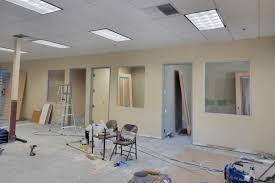Crisis management is key for any business. Even the best-prepared companies can face unexpected events that disrupt operations and harm their reputation. That’s why having a strong crisis management team (CMT) is so important.
A CMT is a group of people who manage and coordinate how a company responds to a crisis. They help reduce the impact of the crisis and ensure the company gets through it with as little damage as possible.
In this guide, we’ll cover how to build an effective CMT for your organization.
The Role of a Crisis Management Team
Before we start building a Crisis Management Team (CMT), we need to know what they do. The main jobs of a CMT include:
- Spotting potential crises
- Creating risk management strategies
- Updating stakeholders during crises
- Organizing resources for response
- Learning for future improvements
Key Roles Within a Crisis Management Team
To create a strong emergency response team, it’s important to identify key roles to fill. The roles can differ by organization, but some key positions include:
Crisis Manager
The crisis manager leads the Crisis Management Team (CMT). This person makes key decisions, communicates with important people, and coordinates response actions. They need to stay calm under pressure and have good leadership skills.
Communications Manager
The communications manager handles all messages during a crisis. This means talking to employees, customers, the media, and other important people. They need to have strong communication skills and be able to write clear and effective messages quickly.
Legal Counsel
Having a lawyer on the CMT helps the team make smart legal choices in a crisis. They can also guide on the possible legal effects of the company’s actions or statements during tough times.
Operations Manager
The operations manager handles the practical parts of crisis response, like managing resources and logistics. They need good organizational skills and must be able to make quick decisions.
Human Resources Representative
A human resources rep helps employees during a crisis and assists with personnel decisions. They also manage internal communication.
Building Your Crisis Management Team
Now that we understand the roles within a CMT, let’s look at how to build an effective team for your organization.
Assess Your Organization’s Needs
Disaster recovery plans vary by industry, company size, and location. Your CMT should be tailored to your specific organization’s needs. Consider the potential risks and crises that your business could face and identify the skills and roles needed to effectively manage them.
Choose the Right People
Choosing team members with the right experience, skills, and personalities is key for a successful CMT. Seek individuals skilled in crisis management, communication, decision-making, and leadership.
Train Your Team Regularly
To keep your Crisis Management Team (CMT) ready for a crisis, it’s important to train them often on different situations. This will help them know their roles and responsibilities better, so they can handle any situation with confidence.
Engage with External Experts
Working with a local PR agency, like this pr agency in Vancouver, can give you extra insights and skills. This helps your team work better. You might also want to bring in other experts for your CMT, like lawyers, consultants, and industry pros.
Releated: How To Create A Long-Term Asset Management Plan?
Build an Effective Crisis Management Team with this Guide
A strong Crisis Management Team is key to reducing the impact of crises on your organization. This guide helps you prepare your business for any crisis. Make sure to review and update your emergency response plan often to stay ahead of risks. Always be proactive in building a strong CMT for your organization!
Is this article helpful? Keep reading our blog for more.



